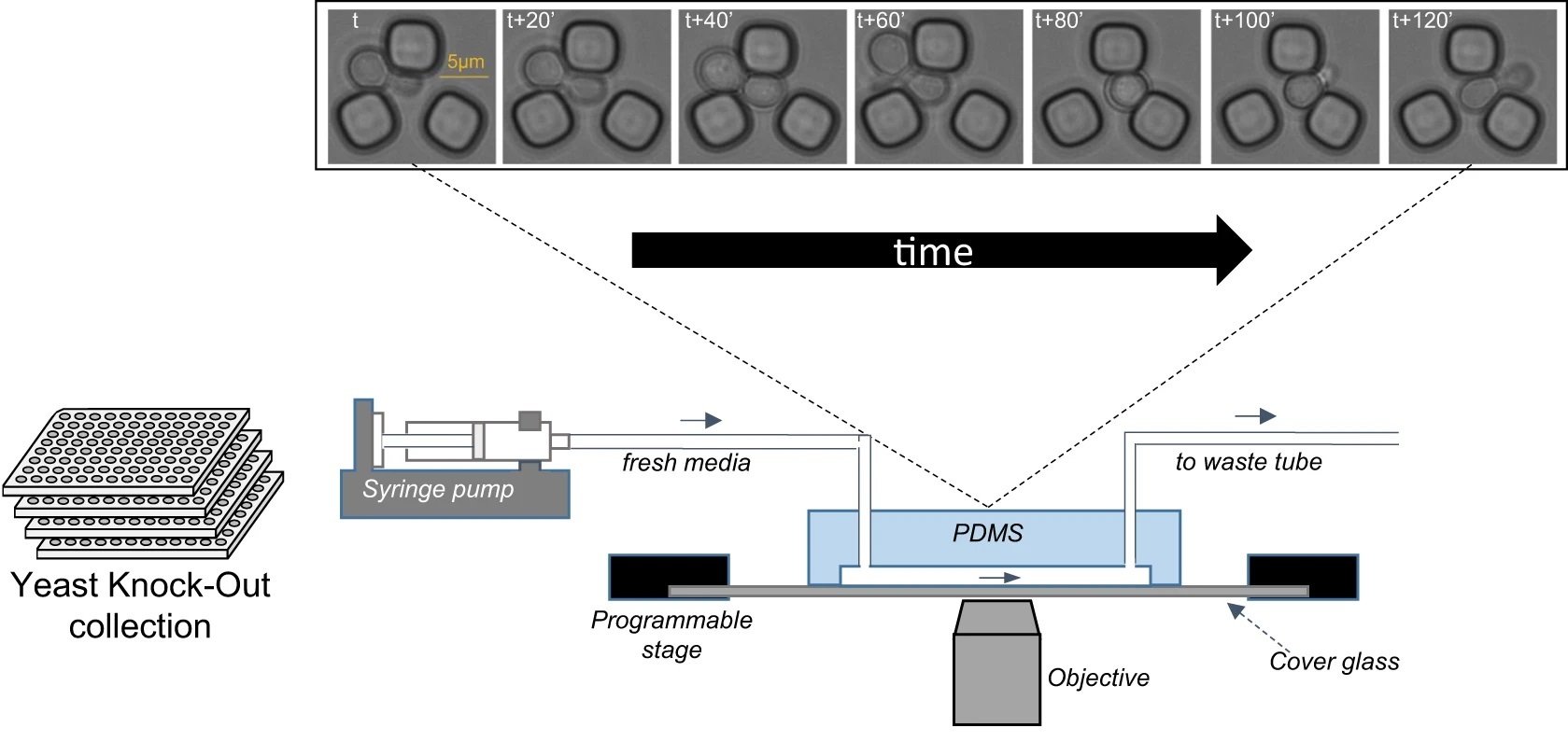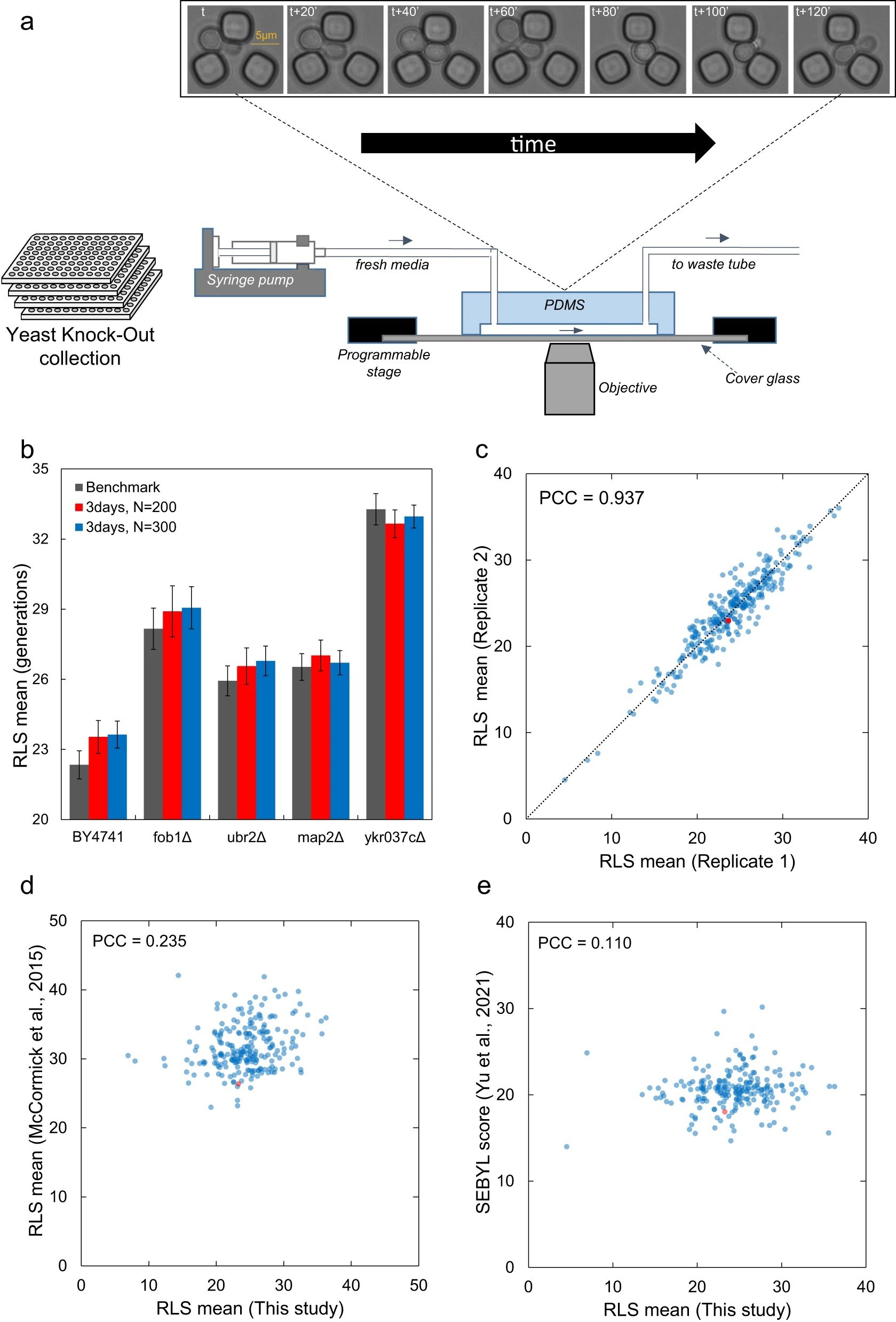
02 Dec Microfluidics Reveal Key to Yeast Longevity: The Impact of a Single Gene
Aging, a complex and multifaceted biological process, is influenced by various genetic, epigenetic, transcriptomic, and proteomic changes. Understanding the cellular mechanisms of aging is crucial for developing insights into organismal longevity. In recent research published in Nature Communications, a novel study using microfluidic chips has provided significant insights into the replicative lifespan (RLS) of yeast, with a particular focus on the SIS2 gene.
“Application of microfluidic platforms facilitated high-precision measurements of yeast replicative lifespan (RLS); however, comparative quantification of lifespan across strain libraries has been missing. Here we microfluidically measure the RLS of 307 yeast strains, each deleted for a single gene. Despite previous reports of extended lifespan in these strains, we found that 56% of them did not actually live longer than the wild-type; while the remaining 44% showed extended lifespans, the degree of extension was often different from what was previously reported.“, the authors explained.

“a Schematic representation of the microfluidic setup mounted on the microscope to measure the RLS of yeast strains. Bright field images were taken every 10 min. With a time interval of 20 min, the sample images show a newborn cell entering into a trapping unit and going through its first generation as a mother cell. The scale bar indicates 5 micrometers. b Validation of the 3-day duration for measuring yeast lifespan. Ground truth RLS mean of several strains was measured using the benchmark approach (5-day experiments and analysis of 300 cells per strain) and compared to the results obtained from 3-day experiments, with 200 or 300 cells analyzed per strain prior to Weibull fitting and predicting the full survival statistics. Solid bars indicate the measured or predicted RLS mean, while the error bars indicate the SEM (n = 200 or 300). c Scatterplot of the RLS mean measured from each replicate of each strain analyzed. The red dot corresponds to the wild-type strain. The dotted line lies across the x = y axis and the Pearson’s correlation coefficient (PCC) of the data distribution from two replicates is indicated. d Scatterplot of the RLS means measured using our microfluidic platform versus a micro-dissection platform (for shared strains). The red dot corresponds to the wild-type strain, and the Pearson’s correlation coefficient (PCC) across the data points is indicated. e Scatterplot of the RLS means measured using our microfluidic platform versus the SEBYL technique (for the strains that were present on both studies). The red dot corresponds to the wild-type strain, and the Pearson’s correlation coefficient (PCC) across the data points is indicated.” Reproduced from Ölmez, T.T., Moreno, D.F., Liu, P. et al. Sis2 regulates yeast replicative lifespan in a dose-dependent manner. Nat Commun 14, 7719 (2023). under Creative Commons Attribution 4.0 International License.
Microfluidic devices can play a pivotal role in measurement of yeast RLS by automating and enhancing the precision of lifespan assessments. This microfluidic-based and high-precision approach has enabled researchers to quantitatively analyze lifespan variations in yeast strains, a feat that was challenging with traditional methods like microdissection. The research involved measuring the RLS of 307 yeast strains, each with a single-gene deletion, using a PDMS microfluidic device. This approach revealed that 56% of these strains did not surpass the wild-type in lifespan, contradicting previous findings. Remarkably, the deletion of the SIS2 gene resulted in the most significant increase in RLS, suggesting its crucial role in yeast aging.
SIS2, a gene involved in the coenzyme A (CoA) biosynthesis and protein phosphatase Z (PPZ) regulation, emerged as a key player in yeast lifespan. The study found that SIS2 deletion led to a notable lifespan increase, highlighting its dose-dependent impact on yeast aging. Further investigations revealed that SIS2’s role in lifespan regulation is independent of its PPZ-inhibitory function, underscoring its significance in the CoA biosynthesis pathway. The study also explored the broader implications of gene deletion on yeast lifespan. By analyzing the gene clusters associated with lifespan extension, researchers identified protein glycosylation and cytoplasmic translation as key biological processes linked to longevity.
The research extended beyond yeast, drawing comparisons with the roundworm C. elegans. It identified twelve gene pairs that influence lifespan extension in both organisms, providing a window into the evolutionary conservation of aging mechanisms. Further experiments demonstrated a dose-dependent relationship between SIS2 expression and yeast RLS. Increasing SIS2 expression reduced lifespan, while reducing its expression extended it. This inverse correlation between SIS2 levels and RLS presents a novel aspect of yeast aging biology.
The study also investigated the metabolic pathways associated with SIS2. Introduction of the human PPCDC gene in the sis2Δ yeast strains normalized their lifespan, indicating the intricate relationship between CoA biosynthesis and cellular aging.
This research not only underscores the importance of microfluidics in aging studies but also opens new avenues in understanding the genetic and metabolic pathways influencing cellular lifespan. The findings regarding the SIS2 gene offer valuable insights into yeast aging and potentially, by extension, into human aging and healthspan.
“Characterization of single cell lifespan using high-precision measurement techniques facilitates the elucidation of novel lifespan outcomes, which helps with the discovery of novel leads into pathways and cellular processes controlling cellular lifespan. Application of microfluidics-based lifespan measurement technologies on strain libraries brings us closer to uncovering the composition and structure of the elusive gene regulatory network governing single-cell lifespan“, the authors concluded.
For more insights into the world of microfluidics and its burgeoning applications in biomedical research, stay tuned to our blog and explore the limitless possibilities that this technology unfolds.
Figures are reproduced from Ölmez, T.T., Moreno, D.F., Liu, P. et al. Sis2 regulates yeast replicative lifespan in a dose-dependent manner. Nat Commun 14, 7719 (2023). https://doi.org/10.1038/s41467-023-43233-y under a Creative Commons Attribution 4.0 International License)
Read the original article: Sis2 regulates yeast replicative lifespan in a dose-dependent manner


